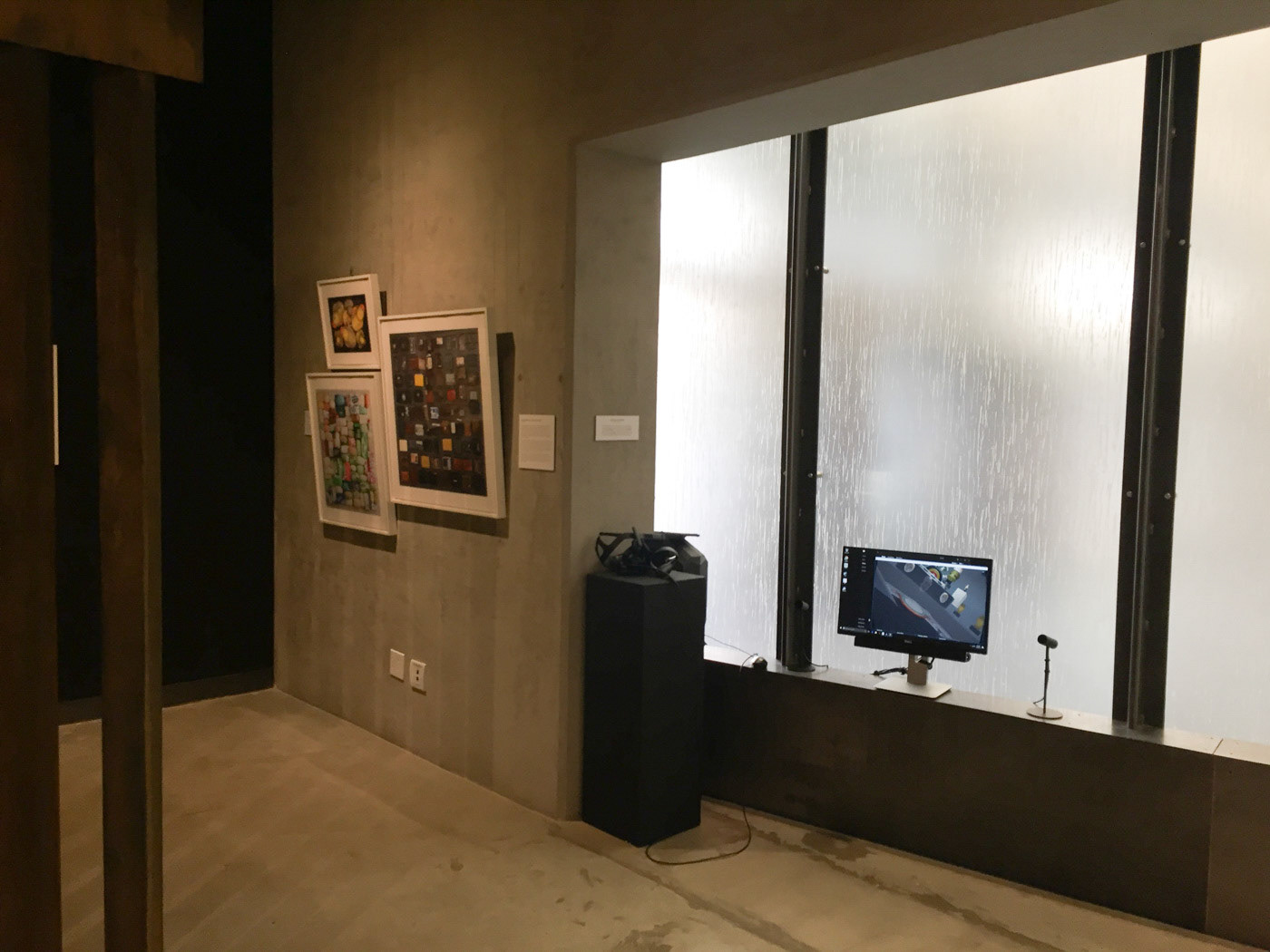ReflectSpace Gallery
Downtown Central Library, Glendale
Downtown Central Library, Glendale
Jan 27, 2018 – March 14, 2018
Artists
Claudia Cano
Tom Kiefer
Ara Oshagan
Dulce Pinzón
Teresita de la Torre
Joan Zierhut
Curated by Ara & Anahid Oshagan











ReflectSpace at Downtown Central Library in Glendale presents “in|visible: Negotiating the US-Mexico Border,” an exhibition of visual, technological and performative narratives that reflect on the permanence and permeability of the US-Mexico border. Through the work of artists, public art and virtual reality, “in|visible” aims to bring attention to the border as not only a physical, familial and cultural impediment but also as the fault line of interdependence of two countries. Artists Dulce Pinzón, Claudia Cano, Teresita de la Torre, Tom Kiefer, Joan Zierhut and a massive replica of the San Diego-Tijuana border wall, conceived by Ara Oshagan, splitting the gallery in half address the visible and invisible impact of the border on lives of those on either side.
“In|visible” opens on January 27 and run until March 14, 2018. Opening reception is on Sunday, January 28, from 4 – 6 pm with a talk by artist Teresita de la Torre at 5 pm. “in|visible” is co-curated by Ara and Anahid Oshagan.
Dulce Pinzón’s photographs from her series, “The Real Story of the Superheroes”, is an homage to invisible immigrant Mexican workers. To make them visible, Pinzón ask immigrant laborers to dress as superheroes and photographs them in their work environment: empowering the least visible to temporarily become the most prominent and visible. The series also highlights the mutual dependence of the US and Mexican economies. All of Pinzon’s subjects send money earned in the US to their families in Mexico supporting that economy. While, conversely, the US economy depends on their labor to function.
Claudia Cano’s performance underscores and complements Pinzon’s invisible immigrant worker series. Cano’s alter ego, Spanish speaking Rosa Hernandez (La Chacha), performs as a cleaning woman in traditional pink and white uniform. Photographs of Rosa from previous performances are part of the exhibition in ReflectSpace. The work emphasizes the invisibility of the immigrant laborer and the parallel process of making art that is invisible.
In Tom Kiefer’s work, the undocumented immigrant is physically absent: only remnants of a journey across the border exist. Kiefer’s project, “El Sueño Americano - The American Dream,” consists of photographs of thousands of non-essential, potentially lethal objects confiscated by US Customs from undocumented immigrants attempting to cross the US-Mexico border. Kiefer, a fine art photographer, worked at a US Customs and Border Patrol processing facility in Southwest Arizona from July 2003 to August 2014 and collected these objects: soaps, combs, spoons, wallets, shoes, gloves, toothpaste, shoelaces, and even condoms. Kiefer’s work gathers the remnants of dreams and speaks to a certain permeability of border walls: while thousands of these objects were confiscated, even more made it across. Kiefer’s work is on display in ReflectSpace as well as the Passageway gallery.
Teresita de la Torre and her work embody the undocumented immigrant crossing a silent threshold. While working along the border to assist immigrants, Torre came across a discarded shirt. Her project, “365 days in an immigrant’s shirt,” collects photographs, writings and sketches that document and contemplate her own journey of wearing this shirt every day for a full year. Torre’s site-specific installation in ReflectSpace includes drawing on walls and objects from the border.
Addressing the visibility and invisibility of the border wall directly is an imposing site-specific installation by, Ara Oshagan, of an adaptation of the San Diego–Tijuana border wall that will split the ReflectSpace gallery in half. The installation acts as a massive impediment but it is also see-through. The transparency of the wall subverts its role as obstruction and enables the audience to see the artwork beyond it. ReflectSpace’s border wall installation forces the audience to negotiate a singular crossing point to traverse the gallery. At this crossing, the actual US-Mexico border is made visible via 3D interactive virtual reality glasses. Drawing from the USA Today special on-line report called “The Wall,” which features virtual reality, videos, stories and images of the US-Mexico border, “in|visible” enables the audience to experience the border firsthand with the latest immersive technology.
“in|visible” further examines the border through public art. Through a collaborative project between Joan Zierhut Studios, Vahagn Thomasian and Glendale Unified School District students, the exhibit spills out of ReflectSpace Gallery and into other parts of the library. Highlighting the infamous Caltrans “Caution” sign that featured the silhouettes of a running immigrant family, the project creates multiple “tape art sculptures” of this iconic sign placed in strategic spots throughout the library. The sculptures highlight the humanization and de-humanization of this sign that has entered the popular imagination.
